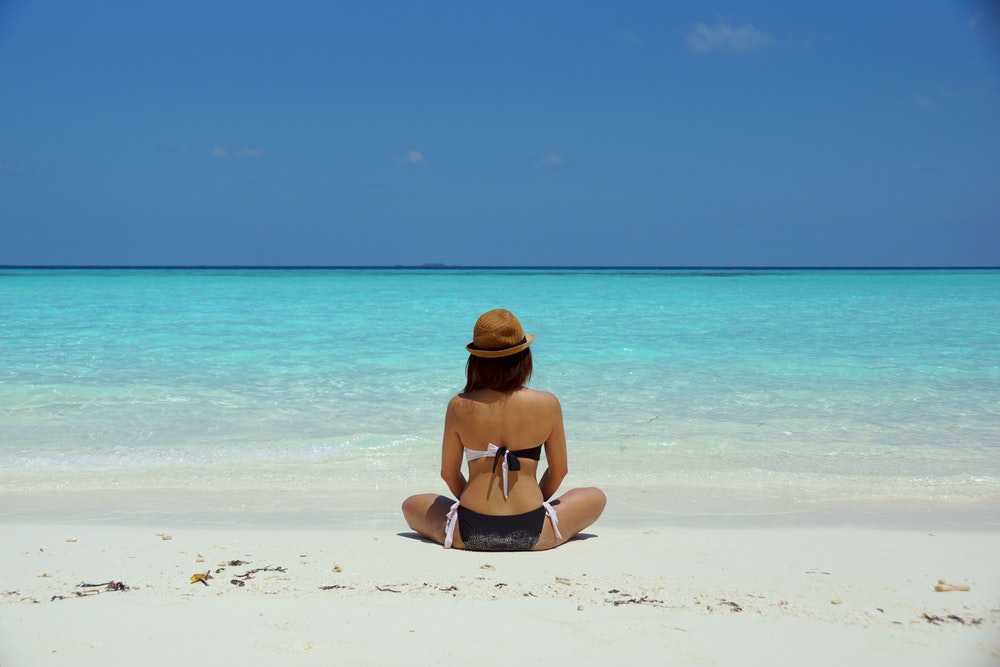We all know that characteristic feeling of sunburn – the hot, tight feeling of the skin at first, followed by the familiar hot, uncomfortable, burning sensation that can last for days. The effects of a bad sunburn can be visible even after weeks, as the skin takes time to slough off the dead skin cells. You can improve the feel and outcome of a bad sunburn with things like Aloe Vera, after sun lotions, or Lavender – but even though the burn itself may fade and your skin feel cooler again, why does your skin remain red after a bad sunburn?
Why sunburn happens?

Everyone is susceptible to sunburn, though depending on your skin tone and where you live it may be more or less noticeable. People who live in less sunny areas are actually more prone to bad sunburn, as their skin is not used to the sun exposure, and they might not be as good at taking precautions against the sun. Dark skinned people can also burn, though it may take longer sun exposure for it to become noticeable.
Sunburn is actually a sign of your skin being badly damaged by the sun. The body produces various proteins in response to sun damage, such as Cytokines and Prostaglandins, which alert the immune system that there is damage occurring in the body. The immune system then responds by opening the blood vessels in the damaged area, and brings inflammation to the area to try to fix the problem – this is why the skin turns red.
The real discomfort of a sunburn arrives 4-6 hours after prolonged exposure to the sun, which is long enough that you may have already spent too long in the sun for your immune system to effectively repair those damaged cells. This means that the damaged skin will completely die and will peel off the body in the next few days. Before this happens, the skin will remain red and uncomfortable, as the immune system does its best to cope with the threat.
The dangers of sunburn
The sun, glorious and warm and relaxing though it is, contains harmful rays that can damage the very fibres of your skin. As well as causing a relatively short term pain and discomfort, prolonged sun exposure can be more harmful than just a red face and a day or two of feeling uncomfortable. Ultraviolet rays will enter your skin and can actually affect the DNA inside your skin cells, leading to permanent damage and an older, more damaged looking skin.
The sun contains both UVA and UVB rays; the UVA gets right down deep into the skin and contributes to ageing and wrinkles, while the UVB is more closely linked to skin cancer and DNA damage. Both are harmful to the skin in both the short and long term.
How to improve a bad sunburn

You can’t do an awful lot to minimise the damage that a sunburn will cause to your skin once it has already happened, but you can help improve the discomfort and pain of a sunburn:
A cool bath
Not a really hot one, as this will cause the burn to feel more painful, but a lukewarm bath will help soothe the discomfort.
Aloe vera
This succulent plant has been used for centuries as a salve for various types of burn, and sunburn is no exception. Cover the skin as much as you possibly can with the insides of this plant; it will be sticky but it will help the burn no end. It will also help prevent the skin from peeling too much; just make sure you keep applying it even when the discomfort is getting better.
Aftersun
There are various different moisturising products on the market that will help soothe your sunburn; most contain specialist moisturisers and ingredients which are known to be soothing and good for the skin. Just ask at your pharmacist who will be able to recommend the best one for you.
Lavender oil
Lavender is another excellent burn soother. It is best to dilute the essential oil in a little water before you spread it over your skin – it should reduce the discomfort, and also lead to a better outcome for your burn in the long term.
Cold compress
You can wet a dishcloth under the cold tap and hold it in place over your burn to soothe it. It will get warm again pretty quickly so you will have to keep soaking it under the tap to make it effective.
Over the counter painkillers
If you have a really bad burn, it is sensible to take painkillers to reduce the discomfort. Just make sure you check the dosage and don’t exceed the daily recommended intake.
How to avoid getting sunburn
Once you have had a bad burn, you won’t be in a hurry to get another one! Covering up in the hottest part of the day, or avoiding the sun altogether, is the most effective way of reducing your chances of getting burnt.
Applying a good, high strength sunscreen is another good way of keeping your skin protected from the sun’s harmful rays; it is recommended that you go for a SPF 30 or higher and reapply every two hours. A wide brimmed hat can shade your face, while a loose fitting cotton top will protect your shoulders and arms. You can still look stylish even when protecting your skin!
As we all know, the sun’s rays can be very damaging to our biggest organ – the skin. But it can be very hard to avoid getting burnt, especially if you are out for longer than you expected, or the day was hotter than you planned for. Now you know the science behind sunburn, and the best ways to avoid it, hopefully you can go through the next summer without any burn at all, and enjoy your light, smooth, young looking skin!


